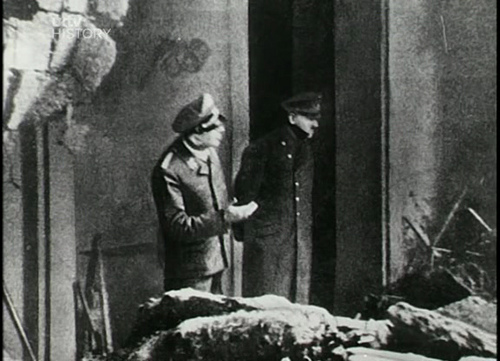
What were the seven largest naval battles in history? Who fought in them? How many men and ships took part? Which nations were involved? Who won? C. Andrew Deen of the Norwich University’s online Masters of Military History program provided MilitaryHistoryNow the following infographic to help shed some light on these decisive sea battles. Let’s hope Andrew and his crew provide us with some more of these! CLICK TO ENLARGE.











Great feature, fantastic details – but Jutland a draw??? Come on. Jellicoe crossed the enemy ‘T’ twice, and Scheer fled the battlefield after massive damage was inflicted on his van. Scheer escaped, but that doesn’t render it a draw. British superiority was even greater the day after the battle than it was before, despite the loss of three battle cruisers.
Hey there: Thanks for the feedback. I think you’re right that in the final analysis the British can rightly claim to have ‘won’ Jutland. But I am guessing that the good people at Norwich U characterized the engagement as a draw because by the end of day on June 1, there appeared to be no clear winner. The British had suffered more than twice the losses as the Germans (and sailed home thinking that they had lost) and the enemy fleet had slipped away largely intact, although its missing cruisers were a lot harder to replace were they not?
I have seen Jutland characterised as a tactical defeat but a strategic win for the British for the reasons you give (higher British losses, but Germany basically confined to port afterwards and Britain free to roam the waves again). A lot of the British negativity around Jutland seems to be we wanted and expected another Trafalgar, irrespective that it was 100 years later!
Interested to know what software was used to create this infographic. Also would be good to see the sources, but the resolution on here is too low to read them.
I think if you click on the graphic it will open in a browser alone as a thumbnail, click it again and it will enlarge. At least that’s how it works on my browser.
BTW – I asked about how they built it too. I figured they used a service like Pictochart. They said they made it from scratch (presumably on Photoshop or Illustrator)
Wonderful information and feature story once again. It is somewhat stunning that two of the six were with our war with Japan. Sadly, my youngest uncle, who was left in Hiroshima at the time war broke out, was killed on Leyte as a Japanese sergeant by the Allies. My dad (his next in line brother) was imprisoned in those stateside prison camps.
I also noted the US had 15 carriers at the Philippine Sea battles; I’m sure a number were escort carriers. Still, it shows the manufacturing strength of the US homelands. We only had the Big E after the Solomon Islands. Even she was badly damaged.
What would be more amazing would be to compare the size of the Okinawa invasion fleet to the largest naval sea battle. While Okinawa wasn’t a naval battle, of course, it would still be interesting.
Fascinating (if not sad) story about your uncle. I seem to recall reading that the U.S. Navy had 99 aircraft carriers by the end of the war, although I think that the majority of those were the smaller flat top carriers.
Yes, I had also read (in a quest for an answer) that the US Navy had 99 carriers and that a majority were CVEs. It is also fact that other hulls had been laid and were in process as war neared its end.
I have read that the British Empire had around 55 carriers (fleet and escort) by the end of WW2, around 20 of which were in the Pacific preparing for the invasion of the Japanese mainland. If that invasion had happened it is scary considering the total allied naval forces available; scary too the potential losses on both sides.
True enough. BTW — even Canada had a number of carriers at the end of WW2.